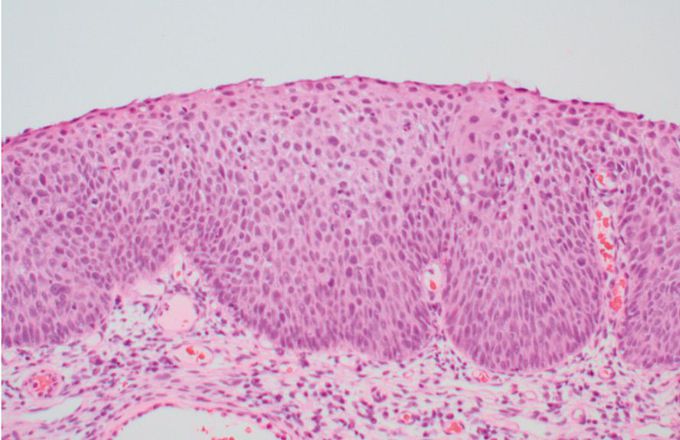

Cervical disease
A 33-year-old woman comes to her nurse practitioner for a routine health maintenance examination. On physical examination, there are no abnormal findings. A Pap smear shows abnormalities; colposcopy and a biopsy are performed. The figure shows the microscopic appearance of the biopsy specimen. Which of the following is the best strategy to prevent the development of this lesion? A. Avoidance of tobacco products B. Consumption of a diet rich in vegetables C. Maintenance of an ideal body weight D. Use of oral contraceptives E. Vaccination for human papillomavirus The figure shows a high-grade squamous intraepithelial lesion (HSIL) termed cervical intraepithelial neoplasia (CIN) III because the dysplasia involves the full thickness of the cervical epithelium. Such lesions arise more frequently in women who have had first intercourse at an early age, have multiple sexual partners, or have a male partner with multiple sexual partners. These factors are believed to increase the risk of infection with human papillomavirus (HPV), particularly types 16 and 18, which have high risk for dysplasias and carcinomas of the cervix. Because of the causal relationship with HPV infection, the use of HPV vaccines has been shown to prevent disease progression.

